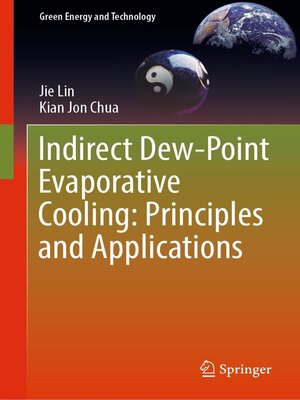Indirect Dew-Point Evaporative Cooling
ebook ∣ Principles and Applications · Green Energy and Technology
By Jie Lin

Sign up to save your library
With an OverDrive account, you can save your favorite libraries for at-a-glance information about availability. Find out more about OverDrive accounts.
Find this title in Libby, the library reading app by OverDrive.



Search for a digital library with this title
Title found at these libraries:
| Loading... |
This book systematically discusses state-of-the-art dew-point evaporative cooling and provides key insights into current research efforts and future research interests. Novel energy-efficient and environment-friendly cooling technologies are essential to reduce the sharply rising energy consumption and greenhouse gas emissions and achieve carbon neutrality. Conventional air-conditioners which adopt a vapor compression cycle are neither energy-efficient nor sustainable due to the use of compressors and chemical refrigerants, as well as their intrinsic coupling of sensible and latent cooling loads. With the merits of high energy efficiency and the ability to decouple cooling loads without using chemical refrigerants, indirect dew-point evaporative cooling provides an ideal alternative solution to air conditioning in a variety of applications.
A comprehensive review of evaporative cooling and their underlying engineering challenges is included. Advanced engineering andmodeling experience critical to the development of dew-point evaporative coolers are highlighted. The effective analysis techniques for dew-point evaporative coolers are documented, and their intrinsic characteristics captured by these methods are reported. Lastly, advanced dew-point evaporative cooling systems in various energy-connected applications are discussed by providing multiple case studies.
Specifically targeted at HVAC engineers, thermal scientists, and energy-engineering researchers, this book will balance fundamental concepts, industrial applications, and leading-edge research. As this book provides readers with depth and breadth of coverage, it can also be used by graduate-level students in relevant fields.






